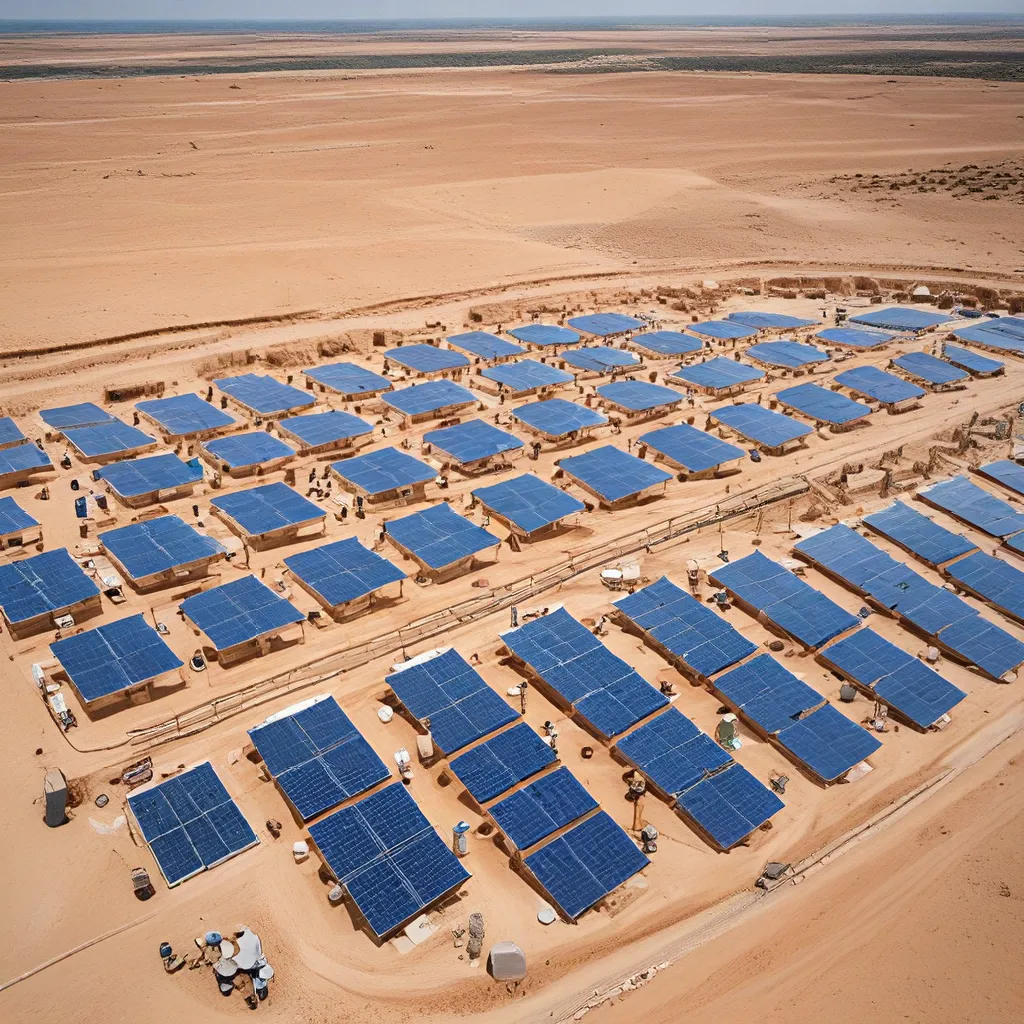
Water scarcity is a pressing global issue that affects millions of people worldwide. As a resident of a coastal town, this crisis hits close to home. But what if I told you there’s an innovative solution in the works that could transform the way we address this problem? Buckle up, my friend, because we’re about to dive into the world of solar-powered desalination.
The Journey Begins: Harnessing the Sun’s Power
Remember that scorching summer day when you felt like you were melting just walking to the beach? Well, that intense heat is exactly what we need to tackle the water scarcity crisis. Innovative solar-driven desalination technologies are harnessing the power of the sun to convert seawater into clean, drinkable water.
Imagine a future where coastal communities no longer have to rely on centralized water systems or expensive and energy-guzzling desalination plants. Instead, they can simply harness the abundant solar energy around them to produce their own sustainable water supply. It’s like having your own personal oasis, right at your doorstep!
Diving into the Science: How Does it Work?
Desalination, the process of removing salt and other impurities from seawater, has been around for centuries. But traditional methods often rely on fossil fuels, making them energy-intensive and environmentally taxing. Enter the game-changing solar-powered desalination.
There are a few different approaches to this innovative technology, each with its own unique advantages. Solar stills, for example, use the heat from the sun to evaporate seawater, leaving behind the salt and other contaminants. Photovoltaic reverse osmosis systems harness solar energy to power pumps that push water through a membrane, separating the salt from the water. And solar-powered electrodialysis utilizes solar energy to drive an electrochemical process that removes the salt and other impurities.
Intrigued? I know I am! The beauty of these systems is that they can be tailored to the specific needs and resources of the local community. It’s like a customizable water-making machine, powered by the sun.
Putting It into Practice: Real-World Examples
Now, you might be wondering, “But does this solar-powered desalination stuff actually work in the real world?” Well, let me tell you, the proof is in the pudding (or in this case, the clean, drinkable water).
In Saudi Arabia, a country renowned for its arid climate, they’ve implemented large-scale solar-powered desalination plants to meet their growing water demands. These projects have demonstrated the feasibility and effectiveness of this technology in a challenging environment.
Over in California, where droughts have become all too common, solar-powered desalination has been a game-changer. By supplementing their water supply with this sustainable solution, they’ve been able to maintain a reliable source of clean water, even during the driest of times.
And let’s not forget about Australia, a country with a vast coastline and a history of water scarcity. Solar-powered desalination has provided clean water to remote communities, allowing them to thrive and reduce their reliance on costly and energy-intensive alternatives.
These real-world examples showcase the potential of solar-powered desalination to transform the way we address water scarcity, especially in coastal areas.
Overcoming the Challenges: Unlocking the Full Potential
Of course, no revolutionary technology is without its challenges. One of the biggest hurdles for solar-powered desalination is the high upfront cost. But as the technology continues to evolve and become more efficient, the long-term savings and environmental benefits are starting to outweigh the initial investment.
Another issue is the intermittency of solar energy, particularly in regions with variable weather patterns. To overcome this, researchers are exploring innovative solutions, such as combining solar power with other renewable energy sources like wind or geothermal energy. This integrated approach can provide a more reliable and consistent supply of clean water.
Ah, but there’s one more challenge that we can’t ignore: the potential environmental impact. The discharge of concentrated brine back into the ocean has raised some concerns about the ecosystem’s well-being. However, advancements in brine management techniques and the overall sustainability of solar-powered desalination are helping to mitigate these concerns.
The Future is Bright: Unlocking a Water-Secure Tomorrow
As we look to the future, the prospects for solar-powered desalination are nothing short of exciting. With continued research, investment, and policy support, this innovative technology has the potential to revolutionize the way we manage water resources.
Imagine a world where every coastal community has the ability to produce its own clean, sustainable water supply, reducing the strain on centralized systems and enhancing resilience to water scarcity. This is the future that solar-powered desalination promises, and it’s one that I can’t wait to see unfold.
So, my friend, are you ready to dive into this water-saving adventure with me? Let’s harness the power of the sun and make waves in the fight against water scarcity. The future is ours to create, one drop of clean water at a time.